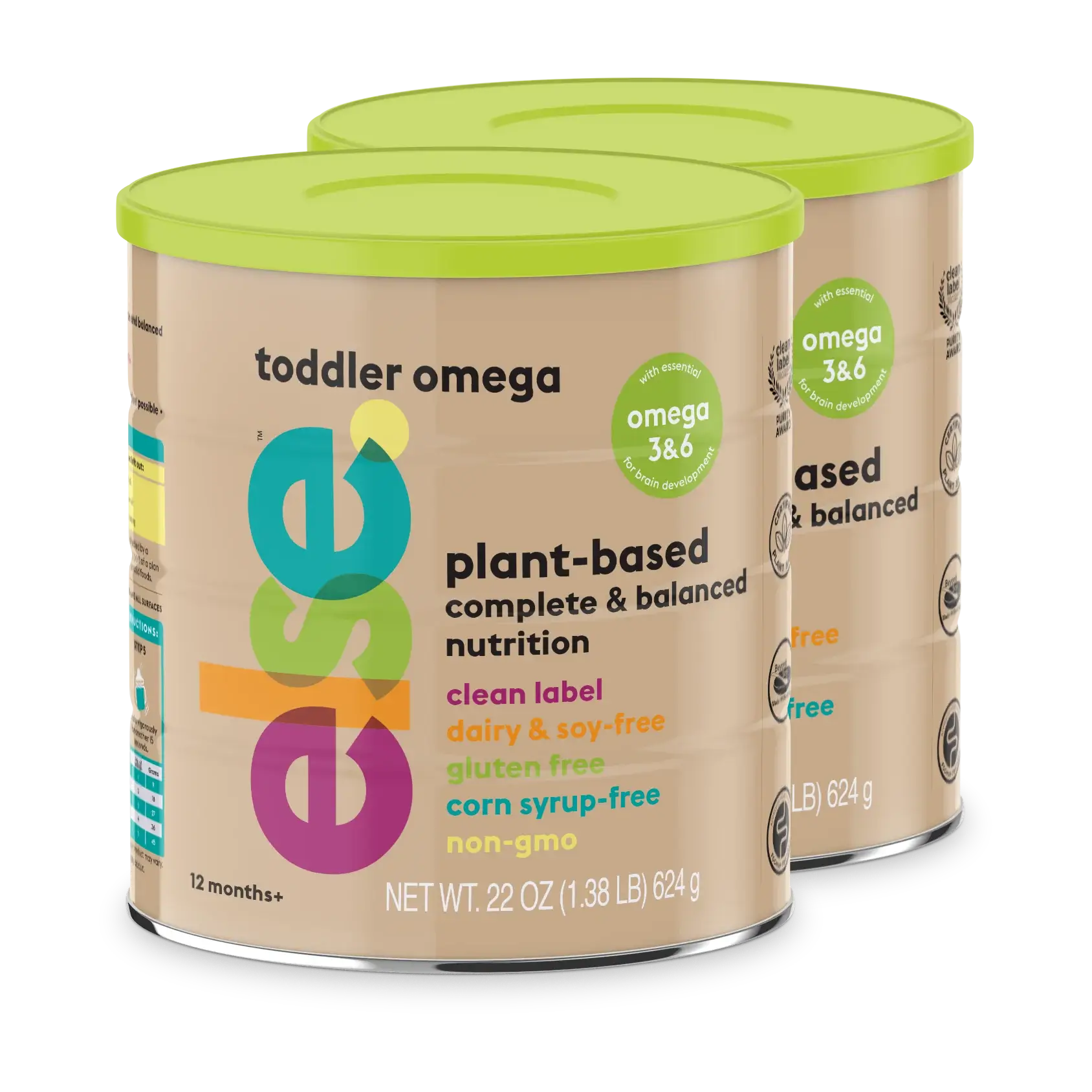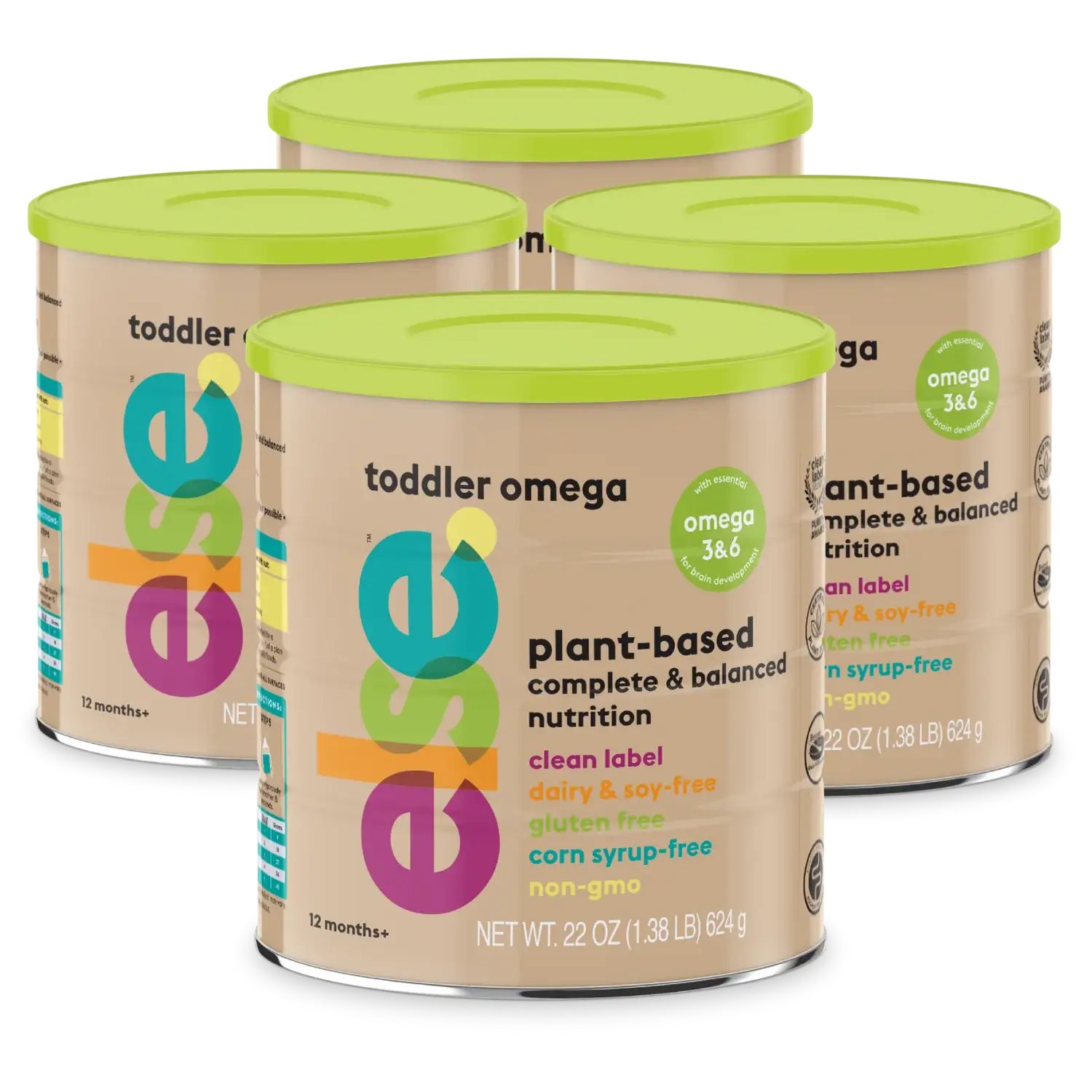Nutritional Power: Omega 3 and 6 Benefits
Updated October 11, 2024

So, what are omega fatty acids?
The polyunsaturated fatty acids required by an individual's body are known as omega fatty acids. Because of the precise location of the double bond within their structure, these are named "Omega." The most well-known omega-3 and omega-6 fatty acids are essential fatty acids with many healthy benefits.
There are two forms of unsaturated fatty acids: polyunsaturated and monounsaturated fatty acids. “Unsaturated” tells us that these fatty acids contain double bonds, and the terms “mono” and “poly” demonstrate whether they have one or many double bonds.
What are the types of omega fatty acids?
Omega-3 fatty acids
Omega-3 fatty acids are polyunsaturated in nature. Omega-3 Alpha-Linolenic acid is not formed in the human body, which is why it is known as an essential fat that must be consumed from our food.
The 3 main Omega-3 fatty acids that have benefits to our body are:
- Alpha-linolenic acid (ALA): This fatty acid has 18 carbons in its chain and can be transformed into EPA or DHA. It regulates the functioning of the nervous system, immune system, and cardiovascular system. (3)
- Eicosapentaenoic acid (EPA): contains 20 carbon atoms. Its main role in the body is the production of eicosanoids, the chemicals that help reduce inflammation. (1)
- Docosahexaenoic acid (DHA): This fatty acid contains 22 carbon atoms. It has a role in the development and function of the brain and visual equity. (DHA contributes to 8% of brain weight). (2)
EPA and DHA are commonly referred to as marine omega-3s, mainly present in fish. ALA is present abundantly in vegetable oil, flax seeds, leafy vegetables, nuts, and animal fats.
Functions of omega-3 fatty acids in the body
- Heart Health: Omega-3 fatty acids are important in managing blood cholesterol, blood pressure, and serum triglycerides. (4)
- Liver Health: Consumption of omega-3 fats helps in the reduction of liver fat. (5)
- Mental Health: Omega-3 fats help prevent and manage depression and psychosis. (6)
- Brain Health: Omega-3 helps in brain development in kids. (7)
- Inflammation: Omega-3 helps in the reduction of inflammation in the body caused due to chronic stress. (8)
Omega-6 fatty acids
Omega-6 fatty acids are a second family of polyunsaturated fats needed for the body's healthy functioning. It has the following types:
- Linoleic Acid (LA): It is one of the most prominent omega-6 fatty acids present in the diet and is essential, meaning it has to be consumed from our food. It is a precursor for other omega-6 fatty acids. It is abundant in vegetable oils, for instance, sunflower, soybean, and corn oil. (9)
- Arachidonic Acid (AA): It is produced from linoleic acid. It plays an important role in the normal functioning of the cardiovascular system and brain. It also helps in the synthesis of eicosanoids, essential for the immune system and blood clotting. Its sources are meat, dairy, eggs, and certain plants. (10)
- Gamma-Linoleic acid (GLA): This fatty acid possesses anti-inflammatory properties. It might be transformed into specific favorable components known as prostaglandins, which assist in controlling immunological response, tone of blood vessels, and inflammatory response. Oils, such as borage, evening primrose, and Black currant seed oil, are all high in GLA.(11)
- Dihomo-Gamma-Linolenic Acid (DGLA): Linoleic acid is transformed into arachidonic acid via the intermediary dihomo-gamma-linolenic acid. In addition to having anti-inflammatory effects, it contributes to the production of numerous useful eicosanoids that control inflammatory and immune system responses. DGLA can be present in small quantities in an array of food items, notably a number of vegetable oils and livestock products. (12)
Functions of omega-6 fatty acids in the body
Even though the human body needs omega-6 fatty acids, it's essential that we keep the amounts of omega-6 and omega-3 fatty acids in control. The optimal proportion should be around 4:1 or less since excessive omega-6 intake in comparison to omega-3 has been scientifically linked with higher inflammatory response and an array of medical conditions. Some important functions of omega-3 fatty acids are the following (13):
- Immune response: Omega-6 fatty acids are important for both starting and controlling immunological and inflammatory responses. They act as building blocks for the formation of eicosanoids, which are essential to these functions. However, consuming too many omega-6 fatty acids in contrast to omega-3s might cause prolonged inflammation.
- Hair and Skin: The maintenance of good hair and skin relies on omega-6 fatty acids. In addition to regulating the production of oils and enhancing the hydration of the skin, they also aid in maintaining the framework and functionality of the skin membrane. Skin health can be compromised, and chapped skin may occur due to omega-6 fatty acid deficiency.
- Brain health: The brain and neurological system possess modest quantities of omega-6 fatty acids, particularly arachidonic acid. They participate in the development of the brain, mental processing, and neurologic health, as well as the formation and operation of cellular membranes.
- Hormones: Omega-6 fatty acids contribute to the synthesis as well as the management of hormones. They function as the building blocks for prostaglandins, lipid signaling compounds that control a number of biological functions, such as inflammatory processes, clotting of the blood, and contraction of smooth muscles.
What are the best omega-3 and 6 sources for babies and toddlers?
Omega-3 sources
- Breast Milk: Mother's milk is the dietary source of omega-3 fats for exclusively breastfed babies. It has a healthy amount of omega-3 fatty acids like EPA and DHA. These are significant for cerebral cortex development and the health of the eyes. (16)
- Fish: When babies begin consuming solid foods around 6 months of age, it is advantageous to gradually introduce age appropriate fatty fish( Trout, salmon, mackerel) that are rich in healthy fats like EPA and DHA. (17)
- Flax seeds: You can include ground flaxseeds in your older child's meals when they are able to consume small grounded seeds. They are a top supplier of alpha-linolenic acid and the essential omega 3 fatty acids. (18)
- Chia seeds: Chia seeds serve as a natural dietary reservoir of omega-3s, just like flaxseeds. These seeds can be incorporated into fruit smoothies, yogurt, or desserts for toddlers. They offer alpha-linolenic acid as well as fiber, which adds to the health benefits. (19)
Omega-6 sources
- Breast/ formula milk: Omega-6 fatty acids are normally present in sufficient amounts in breast milk or appropriately designed infant formulae. (20)
- Vegetable oils: Omega-6 fatty acids are prevalent in vegetable cooking oils like soybean, sunflower, corn, and safflower oils. These oils could be used to make baby food or prepare meals for everyone in the household. (21)
- Nuts and Seeds: Seeds like sunflower seeds, sesame seeds, and nuts, including almonds and walnuts, can be offered to toddlers as paste/ butter or paste which are age-appropriate in their textute for young children and can be incorporated in recipes like smoothies, mashed fruits, or yogurt. These offer other crucial minerals as well as omega-6 fatty acids. (22)
Do omega-3 and 6 have side effects?
Increased intakes of omega-3 fatty acids, especially supplements containing fish oil, can have moderate side effects, including a fishy aftertaste, belching, or digestive issues. Therefore, getting medical advice before initiating any high-dose omega-3 treatment is crucial.
Omega-6 fatty acids are generally beneficial, but consuming too many of them in place of omega-3s might lead to an imbalance. This disparity could trigger inflammation and possibly raise the chance of developing particular medical diseases. The omega-3 to omega-6 proportion in food must be kept in check. It's generally advised to eat a range of omega-6 sources in moderation.
In summary, omega-3 and omega-6 acids are beneficial for the growth and development of infants and young children. The development of the brain and general health are aided by omega-3 fatty acids, which are largely found in fish, breast milk, and various plant sources. Omega-6 fatty acids are essential for maintaining healthy skin as well as managing inflammation. They can be found in nuts and vegetable oils. A varied and packed with nutrients diet is essential to guarantee an appropriate amount of these fatty acids.
The content and advice provided in this article are for informational purposes only and are not a substitute for medical diagnosis, treatment, or advice for specific medical conditions. Always consult a pediatrician to understand the individual needs of your child.
References
- Martins JG. EPA but not DHA appears to be responsible for the efficacy of omega-3 long chain polyunsaturated fatty acid supplementation in depression: evidence from a meta-analysis of randomized controlled trials. Journal of the American College of Nutrition. 2009;28(5):525-42.
- Innis SM. Dietary omega 3 fatty acids and the developing brain. Brain research. 2008;1237:35-43.
- Stark AH, Crawford MA, Reifen R. Update on alpha-linolenic acid. Nutrition reviews. 2008;66(6):326-32.
- Weinberg RL, Brook RD, Rubenfire M, Eagle KA. Cardiovascular impact of nutritional supplementation with omega-3 fatty acids: JACC focus seminar. Journal of the American College of Cardiology. 2021;77(5):593-608.
- Spooner MH, Jump DB. Omega-3 fatty acids and nonalcoholic fatty liver disease in adults and children: where do we stand? Current opinion in clinical nutrition and metabolic care. 2019;22(2):103.
- Amini M, Bahmani F, Foroozanfard F, Vahedpoor Z, Ghaderi A, Taghizadeh M, et al. The effects of fish oil omega-3 fatty acid supplementation on mental health parameters and metabolic status of patients with polycystic ovary syndrome: a randomized, double-blind, placebo-controlled trial. Journal of Psychosomatic Obstetrics & Gynecology. 2020:1-9.
- Ahmmed MK, Ahmmed F, Tian H, Carne A, Bekhit AED. Marine omega‐3 (n‐3) phospholipids: A comprehensive review of their properties, sources, bioavailability, and relation to brain health. Comprehensive Reviews in Food Science and Food Safety. 2020;19(1):64-123.
- Carracedo M, Artiach G, Arnardottir H, Bäck M, editors. The resolution of inflammation through omega-3 fatty acids in atherosclerosis, intimal hyperplasia, and vascular calcification. Seminars in immunopathology; 2019: Springer.
- Marangoni F, Agostoni C, Borghi C, Catapano AL, Cena H, Ghiselli A, et al. Dietary linoleic acid and human health: Focus on cardiovascular and cardiometabolic effects. Atherosclerosis. 2020;292:90-8.
- Zhou Y, Khan H, Xiao J, Cheang WS. Effects of arachidonic acid metabolites on cardiovascular health and disease. International journal of molecular sciences. 2021;22(21):12029.
- Lee KSS, Sarparast M, Zhang F, Seyedehelham P, Gonzalez RE, Kessler B, et al. An endogenous polyunsaturated fatty acid, dihomo‐gamma‐linoleic acid, induces neurodegeneration in C. elegans via ferroptosis. The FASEB Journal. 2022;36.
- Ismail A. Anti-atherogenic actions of dihomo-gamma-linolenic acid and its key metabolites: Cardiff University; 2021.
- Djuricic I, Calder PC. Beneficial outcomes of omega-6 and omega-3 polyunsaturated fatty acids on human health: An update for 2021. Nutrients. 2021;13(7):2421.
- Farag MA, Gad MZ. Omega-9 fatty acids: Potential roles in inflammation and cancer management. Journal of Genetic Engineering and Biotechnology. 2022;20(1):1-11.
- Sartorio MUA, Pendezza E, Coppola S, Paparo L, D’Auria E, Zuccotti GV, et al. Potential role of omega-3 polyunsaturated fatty acids in pediatric food allergy. Nutrients. 2021;14(1):152.
- Bzikowska-Jura A, Czerwonogrodzka-Senczyna A, Jasińska-Melon E, Mojska H, Olędzka G, Wesołowska A, et al. The concentration of omega-3 fatty acids in human milk is related to their habitual but not current intake. Nutrients. 2019;11(7):1585.
- Nindrea RD, Aryandono T, Lazuardi L, Dwiprahasto I. Protective effect of omega-3 fatty acids in fish consumption against breast cancer in Asian patients: a meta-analysis. Asian Pacific journal of cancer prevention: APJCP. 2019;20(2):327.
- Hussain M, Kaur G, Mohapatra C. Nutritional composition and functions of flaxseed (Linum usitatissimum linn.). Food Ther Health Care. 2021;3(4):88-91.
- Basuny AM, Arafat SM, Hikal DM. Chia (Salvia hispanica L.) seed oil rich in omega-3 fatty acid: A healthy alternative for milk fat in ice milk. Food and Nutrition Sciences. 2021;12(6):479-93.
- Bahreynian M, Feizi A, Kelishadi R. Is fatty acid composition of breast milk different in various populations? A systematic review and meta-analysis. International Journal of Food Sciences and Nutrition. 2020;71(8):909-20.
- Kazlauskienė D, Kasparavičienė G, Nenortienė P, Marksa M, Jukilaitytė J, Velžienė S, et al. Determination of fatty acid composition and antioxidant activity in vegetable oils. Chemija. 2021;32(1).
- Kapoor B, Kapoor D, Gautam S, Singh R, Bhardwaj S. Dietary polyunsaturated fatty acids (PUFAs): Uses and potential health benefits. Current Nutrition Reports. 2021;10:232-42.
- Majumder D, Debnath M, Sharma KN, Shekhawat SS, Prasad G, Maiti D, et al. Olive oil consumption can prevent non-communicable diseases and COVID-19: A Review. Current Pharmaceutical Biotechnology. 2022;23(2):261-75.
- Opiyo SA, Mugendi BJ, Njoroge PW, Wanjiru SN. A Review of Fatty Acid Components in Avocado. 2023.
- Mohammed SG, Qoronfleh MW. Nuts. Personalized Food Intervention and Therapy for Autism Spectrum Disorder Management. 2020:395-419.














